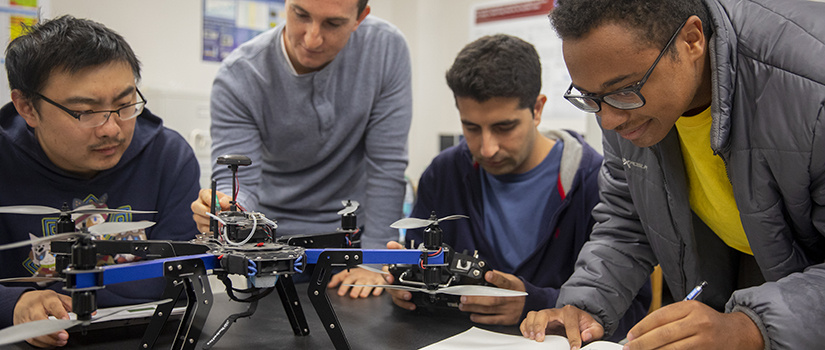By Leigh Thomas | January 17, 2020
David Matolak of the College of Engineering and Computing is participating in a three-year research project through the National Science Foundation that will test 5G and other advanced wireless technologies to help unmanned aerial vehicles (UAVs, also known as drones) fly more safely and efficiently.
The project is part of AERPAW (Aerial Experimentation Research Platform for Advanced Wireless), a $24 million, five-year project led by NC State University. AERPAW is focused on integrating UAVs into 5G and future networks to increase connectivity.
Matolak will develop radio technologies for the testbed, aside from Wi-Fi or cellular, to identify various ways to achieve efficient information transfer across the variety of wireless channels that UAVs will encounter.
“Technologies use different types of modulation and signal processing. It’s not a one-size-fits-all approach, so we’re looking for those that are particularly efficient for other applications,” Matolak said.
Matolak anticipates beginning test flights of UAVs in year two of the project. During year one, the NC State research team will build base stations and other infrastructure in the Raleigh area. Matolak will provide input on their research and work with that team through the testing process.
With increased speed and connectivity achieved through advanced wireless technologies, the UAVs have greater ability to communicate with networks while flying, providing benefit in disaster response and other scenarios.
Matolak explains that this research has many possibilities for future application, citing the cellular industry as one example. In can be used to provide radio services in a crowded space during a public event, when usage is high and connectivity can be low. It will also offer a public safety component, such as through enhanced or more efficient methods of communication for police, fire or search and rescue. Another application would involve a more safe distribution of goods, such as medical supplies, to remote or rural areas.
AERPAW is part of the Platforms for Advanced Wireless Research (PAWR), funded by the National Science Foundation and wireless industry sponsors. AERPAW is designed to secure the United States’ leadership role in wireless technology innovation. It is the third PAWR platform, with others based in New York City and Salt Lake City.
In addition to the University of South Carolina and NC State University, other partners on the AERPAW project include the Wireless Research Center, the Renaissance Computing Institute at the University of North Carolina, Mississippi State University and Purdue University.
Matolak is a professor of electrical engineering in the College of Engineering and Computing. His primary research interests are in wireless communications, and he has worked with NASA for the last 15 years through the Glenn Research Center in Cleveland and NASA Headquarters in Washington, DC.
